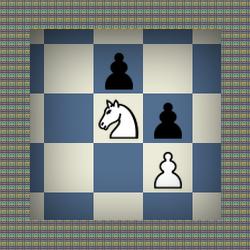
The Sicilian Hole, Part Two
Last week we analyzed a common situation that happens in many different openings. Black voluntarily creates a 'hole' on the d5 square hoping to compensate it with activity of his pieces (it is especially typical for certain variations of the Sicilian Defense). We saw that if White ends up with a 'good' Nd5 vs. 'bad' dark-squared bishop, then Black is pretty much doomed. But what happens if Black doesn't allow the Nd5 to stay there and just trades it for his light squared bishop? We are going to analyze such a situation today.
The next game is very instructive since it shows the whole process: first it was Nd5 which got eliminated, then it was a rook, which was traded too. Finally White puts his light squared bishop on the key d5 square and it decides the game:
Part 1: Nd5
Part 2: Rd5
Part 3: Bd5
This real masterpiece of the veteran US grandmaster Sergey Kudrin over an extremely strong opponent underlines several key features of this kind of a position. White's advantage in the middlegame with opposite-colored bishops with a powerful Bd5 vs. a less active dark squared bishop of the opponent is very long lasting. Therefore White can slowly use two major advantages of his position: play on the kingside, where the f7 pawn is an easy target for the bishop on d5, or play on the queenside where Bd5 will support an advance of his b-pawn.
The next game is a good test for your creativity. Look at the position shown on the next diagram. Black managed to securely protect his main weakness: the f7-pawn. White would love to promote his passed b-pawn, but how is it possible to break Black's blockade on the dark squares? So, try to find White's winning plan. If you cannot figure it out, then maybe this article will help you:
It is amazing how the bishop on d5 alone was able to protect the white king against the whole opponent's army!
Our final example clearly demonstrates that Black experiences serious problems even in an endgame due to the permanent weakness of the f7-pawn. Look at the diagram and tell me if you can imagine any result other than a draw. After all, it is an endgame with opposite color bishops, right? And yet, Black's position is very difficult and a very strong GM Walter Browne was not able to save it. The permanent weakness of the Black f7-pawn and the difference in the activity of the bishops should be blamed for the loss.
In the final installment of this article we will discuss the situation where White 'repairs' Black hole on d5 by putting his own pawn there. Does it bring Black any relief?
RELATED STUDY MATERIAL
- Read the first part in this series;
- Read GM Grigory Serper's article Kings Gone Wild!;
- Watch GM Melikset Khachiyan's video Opposite Colored Bishops in the Middlegame;
- Check out the Chess Mentor The Art of Exchanging Pieces.



